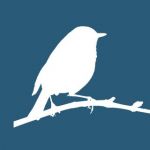If you’ve come this far you’ll be excited, relieved and perhaps a little saddened to know that you’ve reached the last block in our 2022 Quilt Along. We hope you’ve enjoyed it so far, but we’ve saved the best ’til last. This Blue Ridge Mountain Star block is a stunner and a worthy end to your journey.
QUILT ALONG 2022 – BLUE RIDGE MOUNTAIN STAR QUILT BLOCK 13
Finished Size 20″ (Unfinished 20-1/2″)
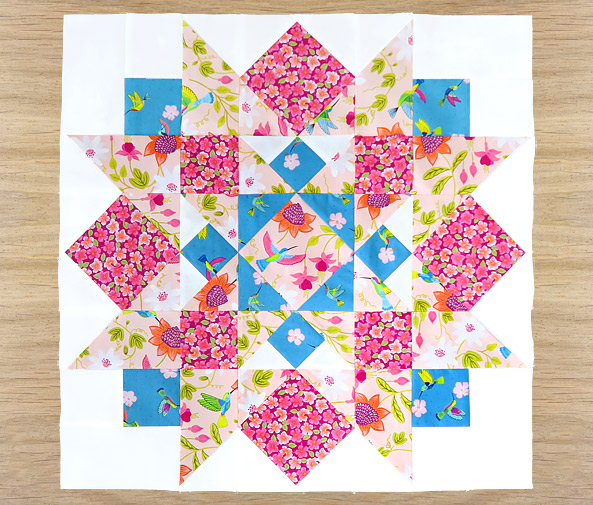
Blue Ridge Mountain Star quilt block is our final and largest quilt block. It is the centre and focal point of our quilt. This uneven nine patch block is made from squares, rectangles, half square triangles and flying geese. This fabulous block will be the showcase of your quilt.
CUTTING
Larger block means extra cutting, extra matching and extra sewing! So, take your time, listen to some relaxing music and have a cupper, no rush. You will need three fabric colours for this block as well as the background fabric.

A. Eight 5-1/2″ x 3″ rectangles (pink)
B. Four 5-1/2″ x 3″ rectangles (white)
C. Eight 3″ x 3″ squares (blue)
D. Four 3″ x 3″ squares (dark pink)
E. Twenty 3″ x 3″ squares (white)
F. Sixteen 3″ x 3″ squares (pink)
G. Four 5-1/2″ x 5-1/2″ squares (dark pink)
H. Four 3-5/8″ x 3-5/8″ squares (white)
I. One 5-1/2″ x 5-1/2″ square (pink)
J. One 6-1/2″ x 6-1/2″square (blue)
The background fabrics for this block are B, E & H.
BLOCK ASSEMBLY:
- All seams are 1/4″ and I use a stitch length of 1.8.
- As a rule, you would press your fabric seams towards the dark side (darker fabric) but not always. I finger press my seams before pressing with an iron. This allows me to change the seams’ direction if needed without stretching my fabrics.
- In bulky areas press your seams open as this will help reduce thickness.
We are going to begin by making all four of our corner units.
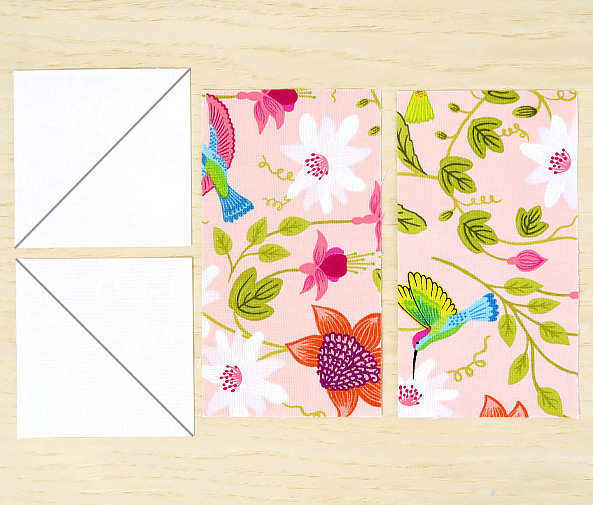


First we are going to make the corner points of the star using two of your pink 5-1/2″ x 3″ rectangles A, and two white 3″ x 3″ squares E. We are going to use the ‘stitch and flip’ method for accuracy. On the wrong side of the small white squares draw a diagonal line from corner to corner.
Now place the small squares on top of the pink rectangles with right sides together (RST) making sure your lines are pointing in the right direction. Line up all your edges and pin to stop your fabrics from shifting, now sew on top of your drawn line.
Trim away the excess fabric leaving a 1/4″ seam allowance.
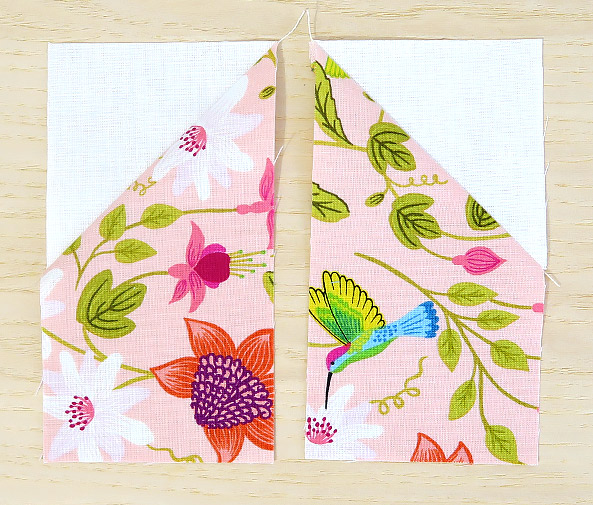
Open out your two units and finger press your seams towards the pink fabric before fixing with your iron.
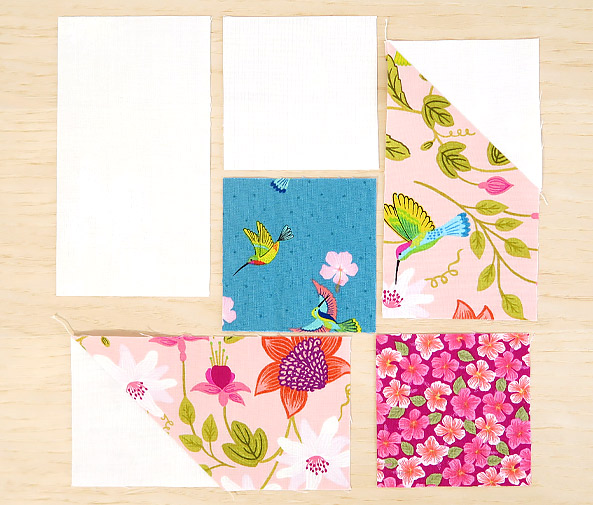


Now lay out your corner unit using the star points you have just sewn and the following cut fabrics: One 5-1/2″ x 3″ white rectangle B and one white E, blue C and dark pink D 3″ x 3″ squares (see left image above).
With RST stitch the white and blue squares together, finger press your seam towards the blue fabric then fix with your iron.
Keeping your fabrics in order sew your unit together into two rows. Finger press your seams in the direction of the arrows (right image) before fixing with an iron.
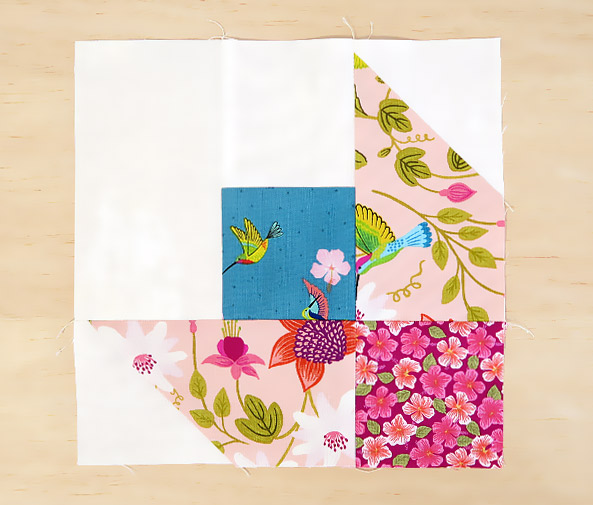
Finally join your rows together, don’t forget to nest your seams, then finger press your seam down before fixing with your iron.
Make three more.
The centre unit is an on point ‘square in a square’ unit and we are going to make it next using the ‘stitch and flip’ method.
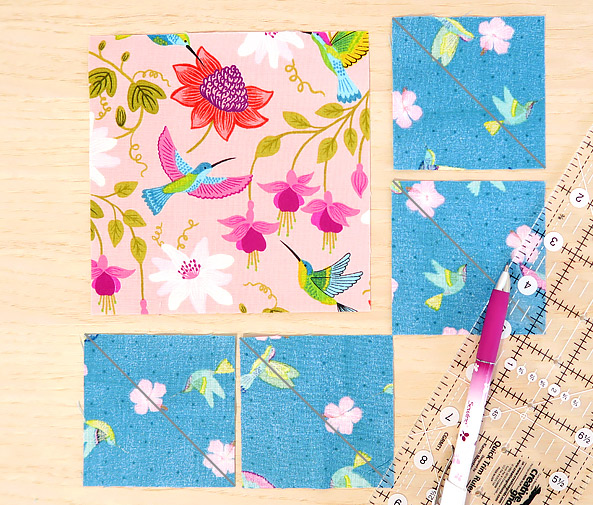

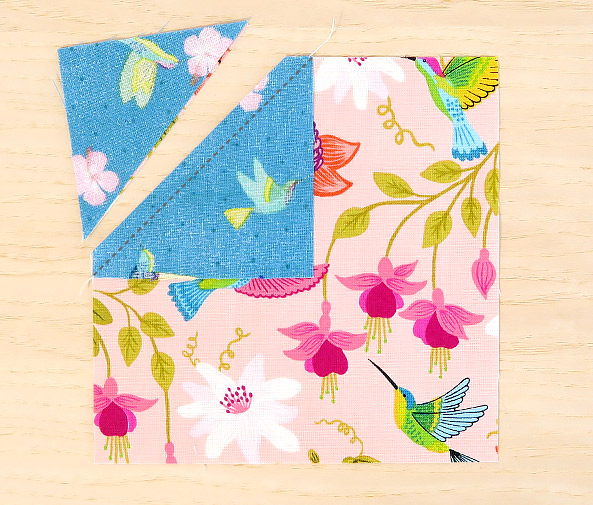
Take your 5-1/2″ x 5-1/2″ pink square I and four 3″ x 3″ blue squares C. Now draw a diagonal line on the wrong side of your blue squares.
Take one blue square and place it RST on top of the pink square in the top left-hand corner. Align the edges and sew on top of your diagonal line then trim away the excess fabric leaving a 1/4″ seam. Then open out your fabric and finger press your seam towards the blue fabric, then fix with an iron.
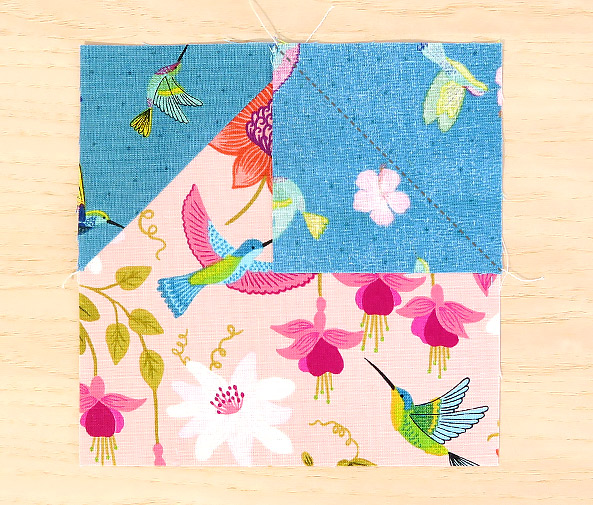
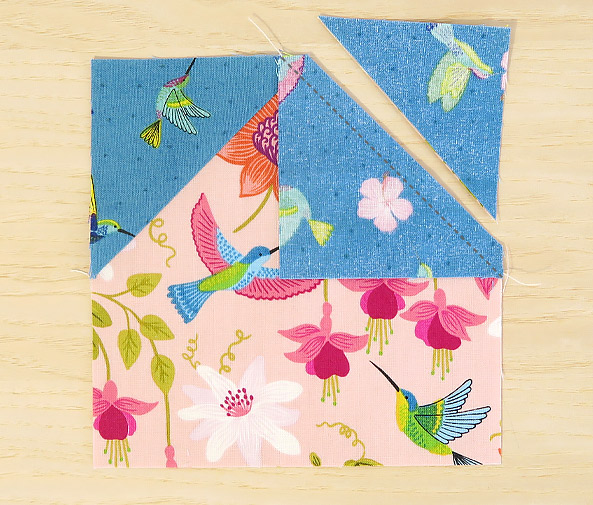
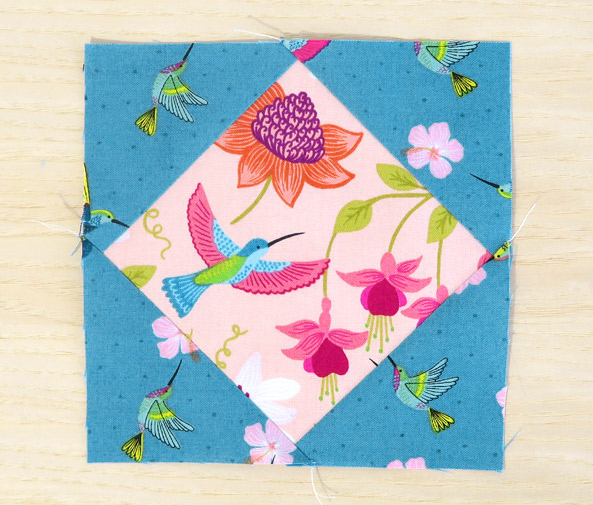
Now repeat this process with your second blue square, trimming away the excess fabric and finger pressing your seam towards the blue before fixing with your iron. Repeat until you have four blue corners.
Now for the top centre unit. This is made from two units, an on point ‘square in a square’ unit and a double flying geese unit. We are going to start with the square in a square unit.
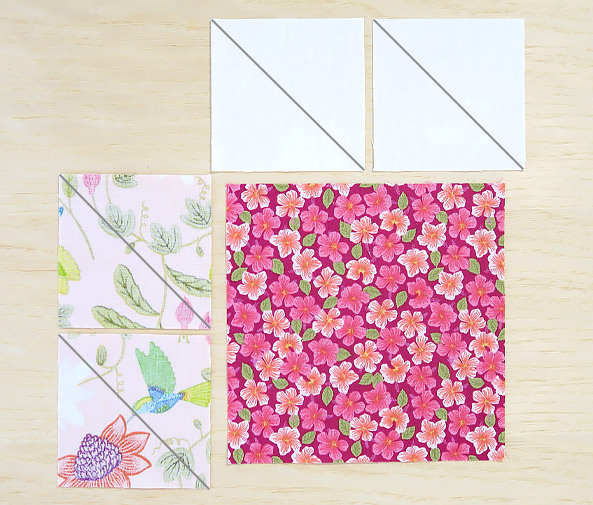

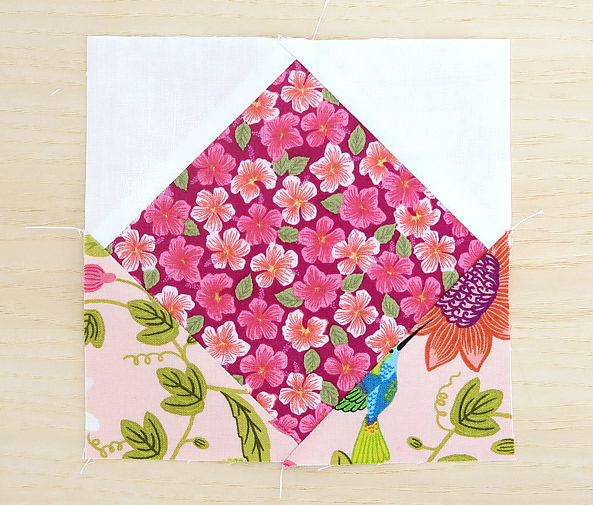
We are going to make it just like the central unit using your 5-1/2″ x 5-1/2″ dark pink square G, two 3″ x 3″ white squares E for the top two corners and two 3″ x 3″ pink squares F for the bottom corners.
Make four in total.
Now for the double flying geese units. We are going to begin by making four flying geese units in one go, known as ‘four at a time flying geese’. We are going to make them a little larger so we can trim them to the correct size. These can be a little stretchy so handle with care.

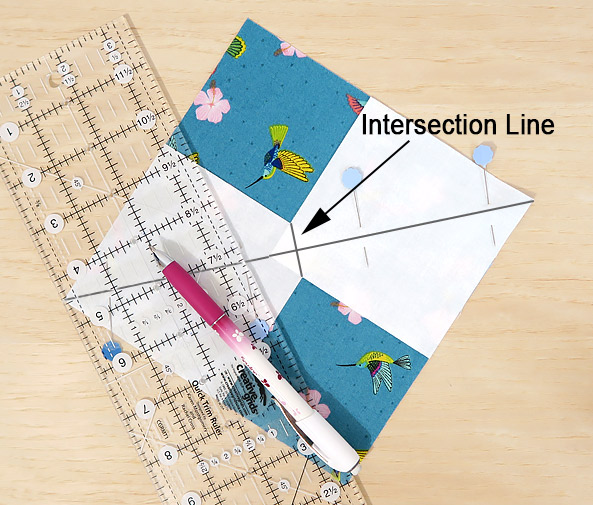

You will need your 6-1/2″ x 6-1/2″ blue square J and four 3-5/8″ x 3-5/8″ white squares H. Draw a diagonal line from corner to corner on the wrong side of your white squares.
Lay two of your white squares on top of the blue in opposite corners RST and align all your edges. Your fabrics should overlap in the centre. We are going to trim away the excess fabric on the white squares by drawing a line where the fabrics intersect. Keeping your fabrics flat, pin together so that they don’t move.
With the fabrics still flat on the table cut along the line and remove the two little triangles. Removing this tiny bit of fabric will help reduce bulk when sewing your units together. It really does make a difference.
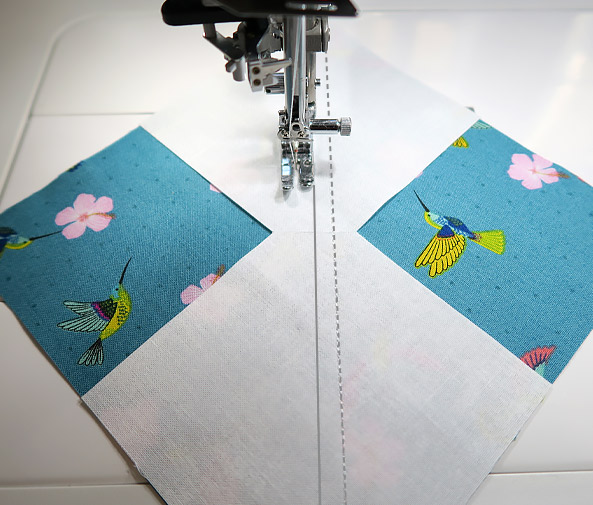

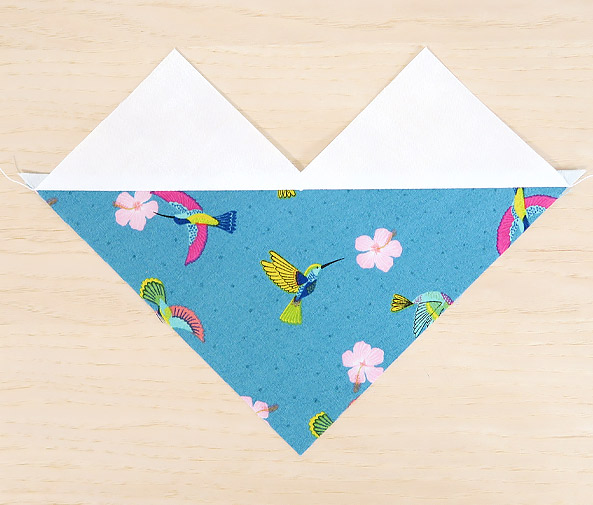
Sew 1/4″ away from each side of your diagonal line. Then cut your unit in to two along the central line. Open the unit and finger press the seams up towards the white triangles before setting with your iron.
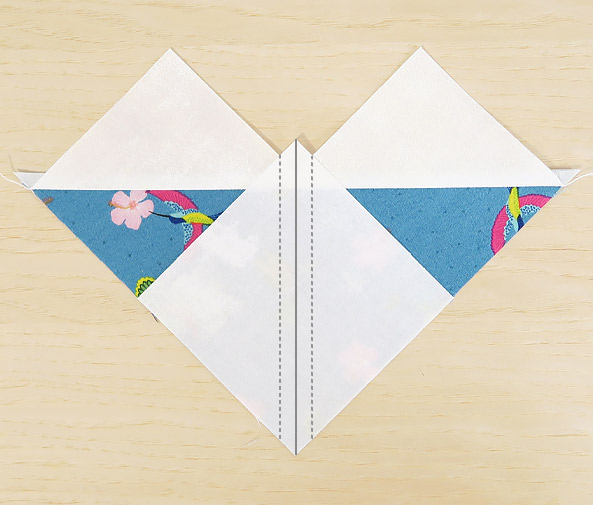

Take one of your units and with RST place one of your remaining 3-5/8″ white squares onto the corner of your blue square aligning your edges. Pin in place and sew 1/4″ away from each side of your diagonal line. Then cut in half. Now open your unit to reveal two flying geese units. Repeat with the remaining unit. You should now have four oversized flying geese units.
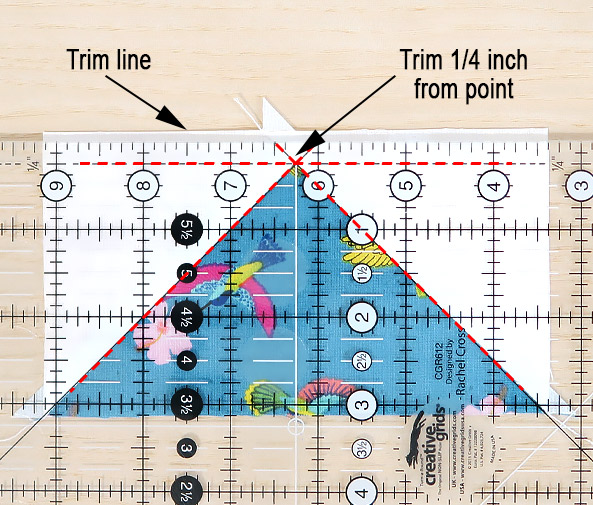
Now it’s time to trim your Flying Geese units to the correct size 5-1/2″ x 3″. Line up your ruler so that it sits 1/4″ away from your blue triangle point making sure your ruler is aligned as straight as possible. I have used the 45° diagonal lines on my ruler to line up my block before trimming away the excess fabric, but if your ruler doesn’t have 45° diagonal lines make sure your ruler is as straight as possible by using its line markings to help you. When you are happy it’s straight, trim!

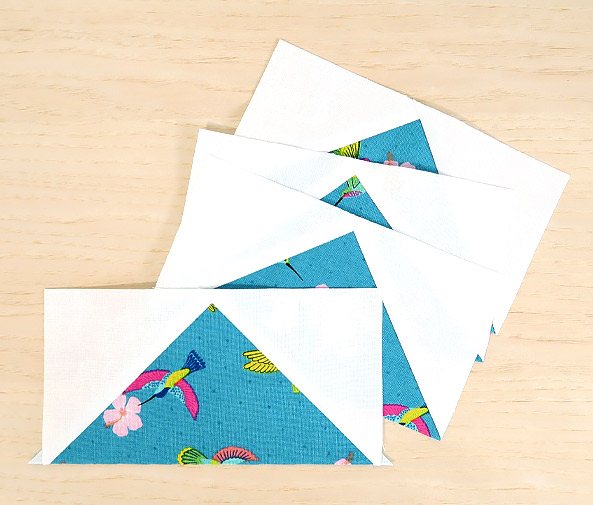
Now trim away all the remaining excess fabric from your flying geese unit so that it measures 5-1/2″ x 3″. I used the 45° lines on my ruler to square my flying geese unit up before trimming but if you don’t have these markings line up your ruler so that its 2-3/4″ line runs through the centre of your block vertically.
Trim the remaining flying geese units in the same way.
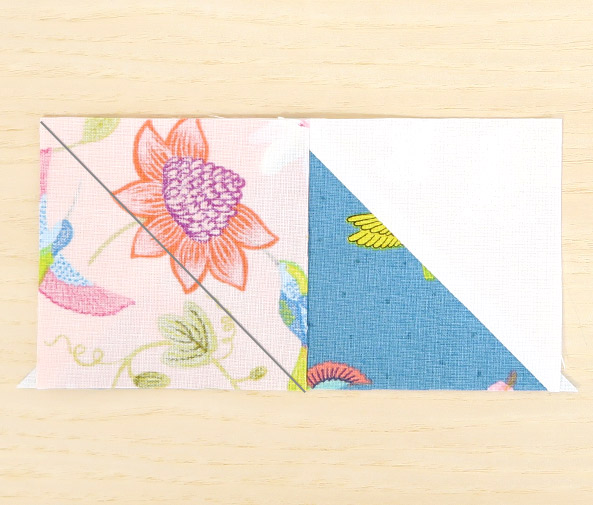
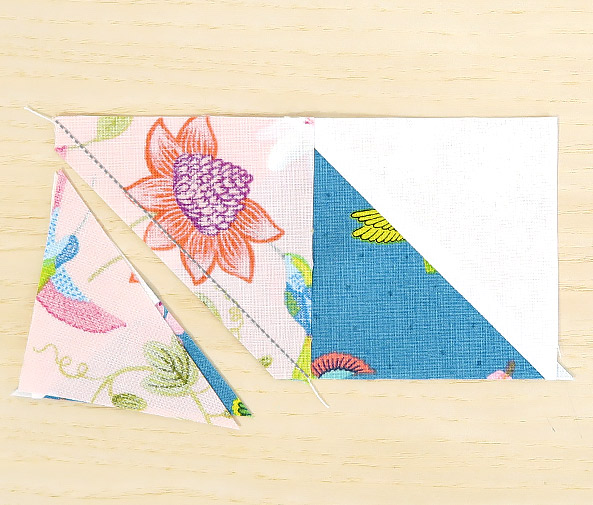
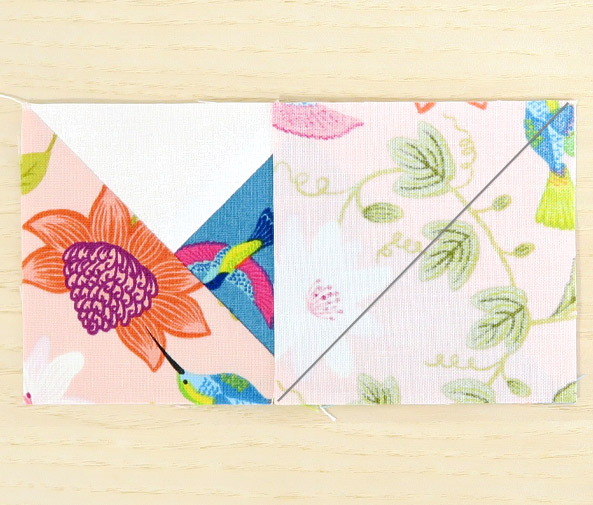
Now we are going to turn our flying geese units into double flying geese units. Take two of your 3″ x 3″ pink fabric squares F and draw a diagonal line on the wrong side from corner to corner.
Then place one of them RST on top of your flying geese unit with the point facing up. Line up all the outside edges. Stitch on the line and trim away the excess corner fabric leaving a 1/4″ seam allowance.
Now finger press the seam down towards the pink fabric and press with your iron to fix.
Repeat for the right-hand corner by placing the other pink fabric square RST on top of the flying geese unit, line up the right-hand top and side. Stitch on the line. Trim away the excess corner fabric leaving a 1/4″ seam allowance. Then finger press your seam to the pink side and fix with your iron.
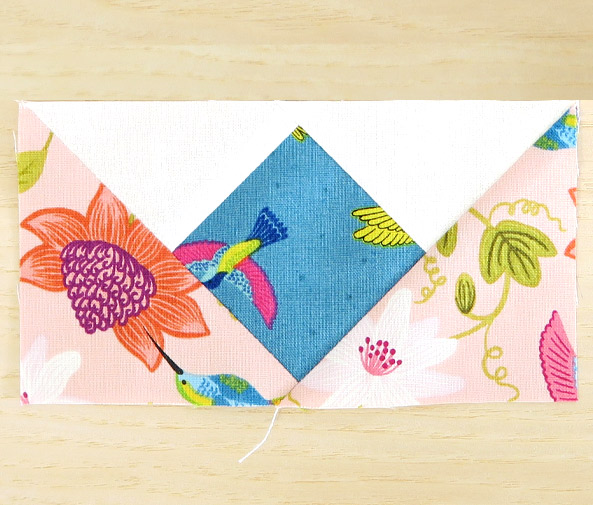
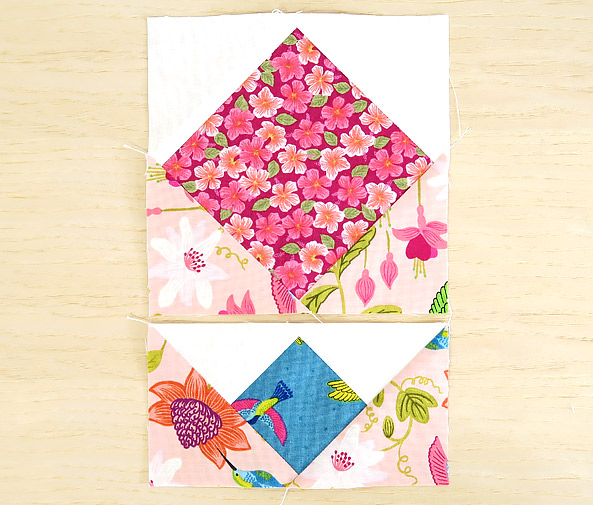
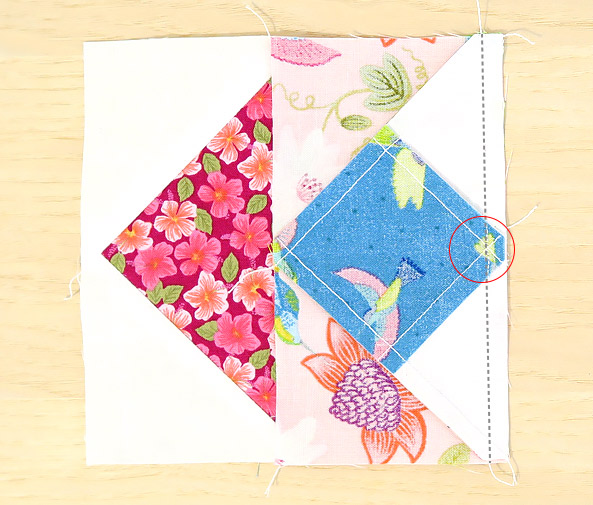

Now we’re going to join together one of your dark pink ‘square in a square’ units and one of your double flying geese units.
Take one of your flying geese units and a pink square in a square unit and lay them out in the order they are to be sewn together. Make sure its orientated correctly (see left image). Then with RST sew together matching your points and being careful to intersect the sewn seams in your unit point as you go (see centre image).
Then finger press your seam open before fixing with your iron.
Now join the other three in the same way.
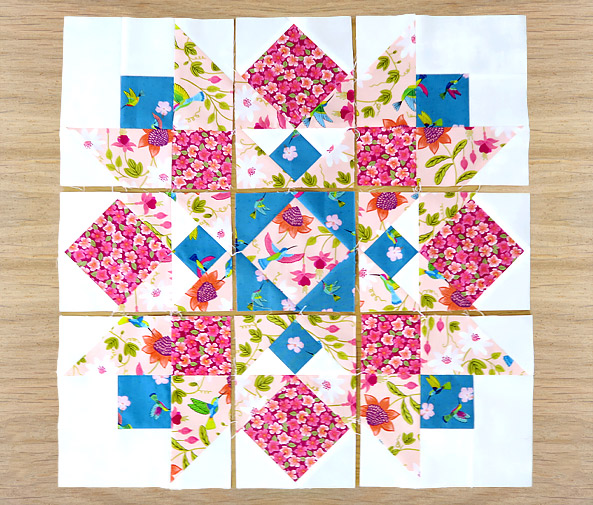
Now lay out all your units to form the Blue Ridge Mountain Star quilt block.

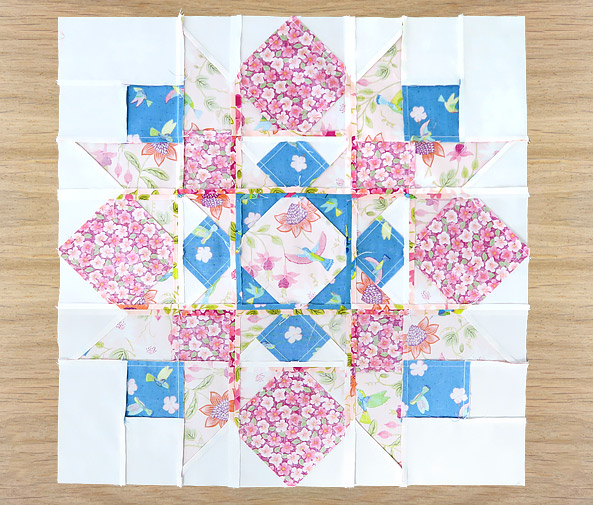
Keeping your fabrics in order, sew your block together one row at a time matching your points and intersecting your seams as you go. Then finger press your seams open before fixing with an iron. Finally join your rows together matching points and seams as before. Finger press your seams open before fixing with your iron.
If you have sewn your block together accurately it should measure 20-1/2″ square but if you need to trim it make sure you leave 1/4″ seam allowance on all your points.
Congratulations you have just finished your last block!
The next instalment will show you how to assemble your blocks into a fabulous quilt.


